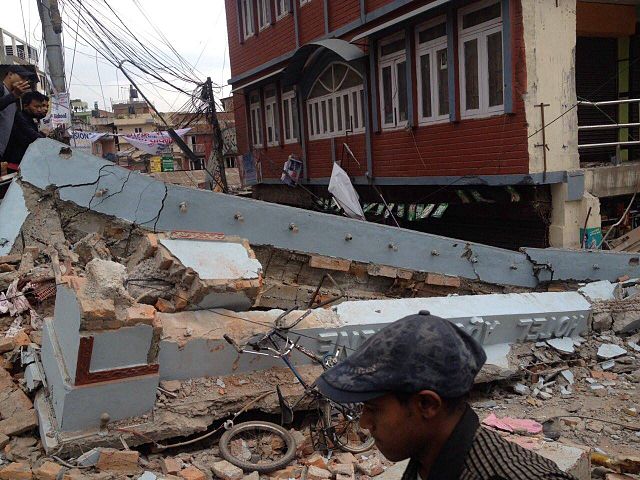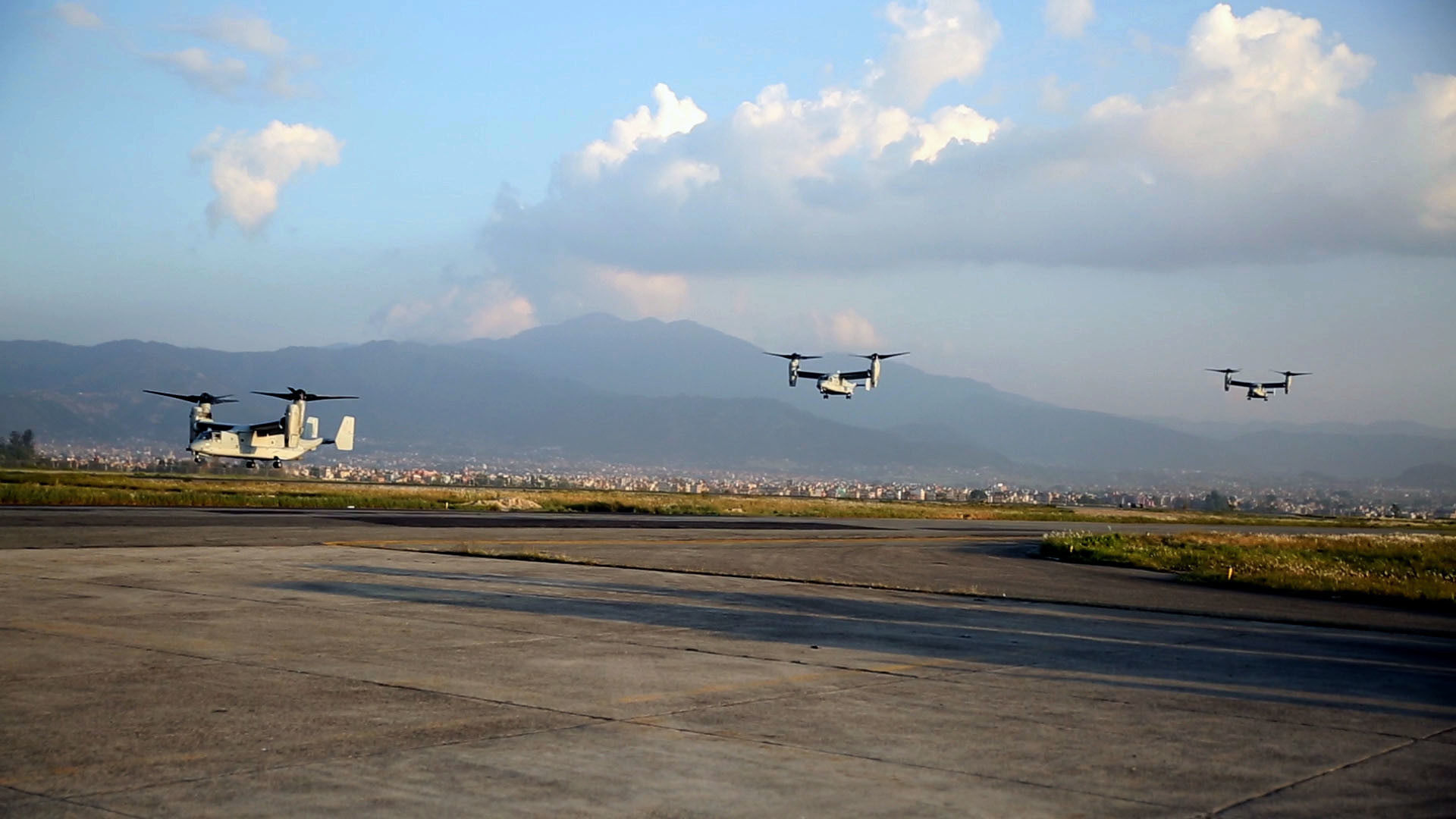
As terrible as the loss of life and damage has been since the April 25, Gorkha earthquake in Nepal, an American and Nepalese training exercise a week before the quake predicted an even worse result, U.S. officials involved with the relief effort told USNI News on Wednesday.
“While this was an extremely significant event — you can’t understate the tragic consequences of [more than] 7,000 people and a number more missing in a country the size of Nepal — it could have been even worse,” U.S. Pacific Command’s (PACOM) director of operations, Rear Adm. Mark Montgomery, told USNI News.
On Wednesday PACOM stood up Joint Task Force 505, the U.S. military response to the Gorkha quake, to provide primarily aviation support to the Nepalese relief forces.
The group overseen by staff from the 3rd Marine Expeditionary Force (3 MEF) in Okinawa was prepared for the mission, PACOM has determined what the two most likely environmental disasters are in the area of responsibility (AOR).

“Two of the ones they study most frequently are typhoons in the Philippine Sea and Southeast Asia — such as what happened with Operation Damayan a year ago — and a major earthquake in Nepal.
“It was a known known and it has been the basis of our ongoing [military-to-military] relations with Nepal as we very aggressively work with them on search and rescue, military medicine and command and control in a disaster response event.”
The U.S. is usually among the first responders for international humanitarian aid and disaster relief (HADR) but not for the current effort.
Operating in Nepal is a tricky logistical challenge. Unlike most countries in PACOM, the potency of America’s extensive naval presence in the region is diluted by how far is nestled in the Asian interior.
However, the U.S. can bring its extensive strategic air lift assets to bear.
Planning exercises determined one of the most useful U.S. units in the event of an
earthquake would help to maintain the runways at Katmandu’s Tribhuvan International Airport.
“We identified early on that we would have to get an U.S. Air Force CRG (Contingency Response Group), which is a unit that supports airfield recovery operations, repair operations and lift — the loading and unloading of aircraft,” Montgomery said.
“One of the first thing we did is activate the CRG and get it moving.”
The CRG helps maintain the airport while Marines have sent have sent four MV-22 Osprey tilt rotor aircraft and one UH-1 helicopter to send assessment teams to America’s assigned sector to the east of Katmandu, Montgomery said.
“In that regard, the MV-22 is a particularly useful aircraft because of its range and lift capacity,” he said.
PACOM has also set up a so-called logistical “air bridge” to help deliver supplies to Tribhuvan through a logistics hub at the Thai naval air station in Utapao with most of the command and control operating from Okinawa.
“We don’t want to have a footprint to big forward and we maintain as much of the staff back on Okinawa or Thailand,” Montgomery said.
What we don’t want to do is when there is an extreme demand for specific commodities — like wood water and facilities — is to set a large footprint for ourselves forward that requires these scarce resources.“
A U.S. presence of about 450 — mostly aviators and aircraft maintainers — will ultimately operate out of Katmandu.
“What we put forward was the appropriate level resources to maintain and operate the rotary wing aircraft and to do the command and control to work with the Nepalese and the other allies there,” he said.





